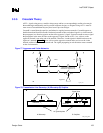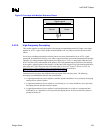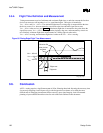
Intel
®
820E Chipset
R
Design Guide 159
Figure 83. One Layer with Multiple Reference Planes
1lay_Mult_refplane
Ground
Signal Layer A
Power
3.4.3.3. High-Frequency Decoupling
This section contains several high-frequency decoupling recommendations that will improve the return
path for an AGTL+ signal. These design recommendations will very likely reduce the amount of SSO
effects.
Just as layer switching and multiple reference planes can create discontinuities in an AGTL+ signal
return path, discontinuities also may occur when a signal transitions between the baseboard and cartridge.
Therefore, providing adequate high-frequency decoupling across VCC
CORE
and ground within the Intel
PGA370 socket cavity and mounted on the primary side of the motherboard will minimize discontinuity
in the signal’s reference plane at this junction. For the Intel 820E chipset/FC-PGA decoupling guidelines,
refer to the
Intel
®
820 Chipset Design Guide Addendum for the Intel
®
Pentium
®
III Processor for the
PGA370 Socket
. These guidelines can be downloaded from the Intel website at
http://developer.intel.com/design/chipsets/designex/298178.htm
.
Transmission line geometry also influences the return path of the reference plane. The following
decoupling recommendations take this into consideration:
• A signal that transitions from a stripline to another stripline should have close proximity decoupling
among all four reference planes.
• A signal that transitions from a stripline to a microstrip (or vice versa) should have close proximity
decoupling between the three reference planes.
• A signal that transitions from a stripline or microstrip through vias or pins to a component (Intel
82820 MCH, etc.) should have close proximity decoupling across all involved reference planes to
ground for the device.


















